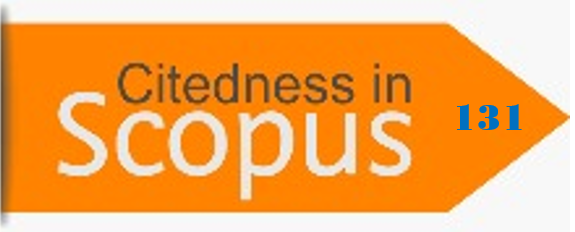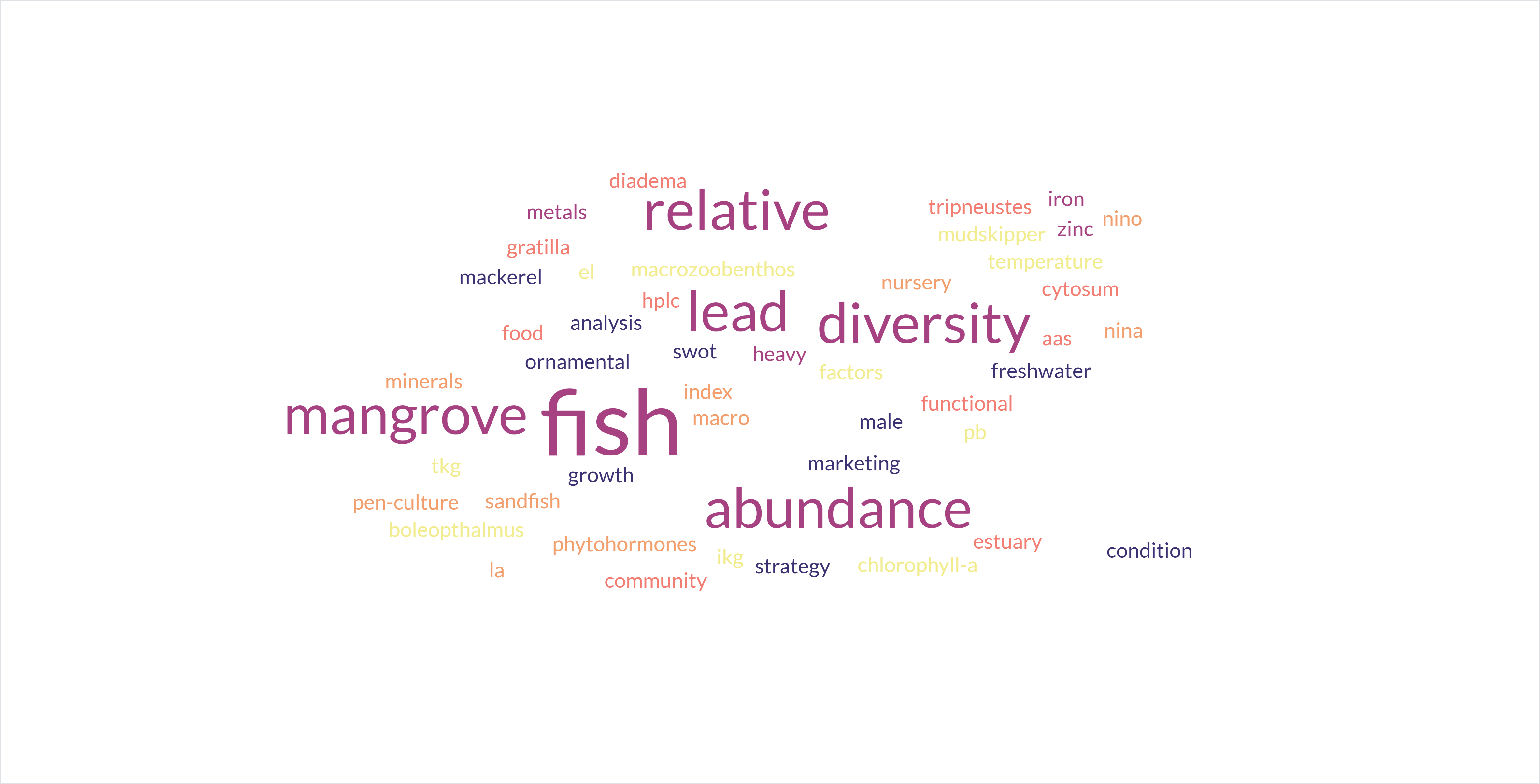Isolation and Potential of Plastic-Degrading Bacteria from Plastic Waste
DOI:
https://doi.org/10.35800/jip.v13i1.58358Keywords:
Bacteria, Isolation, Biodegradation, PlasticAbstract
Plastic waste is an environmental issue, including in marine environments. One method of managing plastic waste is through biodegradation using bacteria. This study aims to isolate bacteria from plastic waste in Malalayang, and North Sulawesi waters, and test their potential to degrade plastic using laboratory experimental methods. Bacteria were isolated using a Nutrient Agar (NA) medium and then tested for their ability to degrade plastic using a Nutrient Broth (NB) medium containing plastic fragments. The NB medium with plastic fragments was incubated using an orbital shaker at room temperature with agitation at 130 rpm for 30 days. Five bacterial isolates were successfully obtained from plastic waste: isolates C1, C2, C3, C4, and C5. Four of the bacterial isolates were found to be capable of degrading plastic, as indicated by the reduction in the dry weight of the plastic after 30 days of incubation. The highest plastic weight reduction was shown in isolate C2, with a decrease of 2.95%, while the lowest reduction was observed in isolate C4, with a decrease of 2%.
Keywords: Bacteria, Isolation, Biodegradation, Plastic.
Abstrak
Sampah plastik merupakan masalah lingkungan termasuk lingkungan laut. Salah satu pengelolaan sampah plastik adalah melalui biodegradasi menggunakan bakteri. Penelitian ini bertujuan mengisolasi bakteri dari sampah plastik Perairan Malalayang, Sulawesi Utara dan melakukan uji potensi bakteri tersebut dalam mendegradasi plastik menggunakan metode eksperimen laboratorium. Bakteri diisolasi menggunakan medium Nutrient Agar (NA), kemudian diuji kemampuan mendegradasi plastik dengan menggunakan medium Nutrient Broth (NB) yang berisi potongan plastik. Medium NB berisi potongan plastik diinkubasi menggunakan orbital shaker pada suhu ruang dengan agitasi 130 rpm selama 30 hari. Lima isolat bakteri berhasil diisolasi dari sampah plastik, yaitu isolat C1, C2, C3, C4 dan C5. Didapatkan empat isolat bakteri yang mampu mendegradasi plastik, yang ditunjukkan dengan pengurangan berat kering plastik setelah diinkubasi selama 30 hari. Pengurangan berat plastik tertinggi ditunjukkan oleh isolat C2 sebesar 2,95 %, sedangkan pengurangan berat terendah oleh isolat C4 sebesar 2 %.
Kata kunci: Bakteri, Isolasi, Biodegradasi, Plastik.
References
Amaral-Zettler, L. A., Zettler, E. R., & Mincer, T. J. (2020). Ecology of Plastisphere. Nature Reviews Microbiology, 18, 139-151. doi:https://doi.org/10.1038/s41579-019-0308-0.
Cappucino, J. G., & Sherman, N. (1998). Microbiology: A Laboratory Manual. 5th Edition. California: Benjamin/Cummings Science Publishing, 21-24.
Ervianto, W. I. (2018). Studi Pendekatan Ekonomi Biru untuk Infrastruktur di Indonesia. Seminar Nasional Sains dan Teknologi, (pp. 1 - 7). Jakarta.
Fachrul, M. F., & Rinanti, A. (2018). Bioremediasi Pencemar Mikroplastik di Ekosistim Perairan Menggunakan Bakteri Indigenous. Prosiding Seminar Nasional Kota Berkelanjutan, (pp. 302-312). Jakarta. doi:https://doi.org/10.25105/psnkb.v1i1.2910.
Mardalisa, Fatwa, E. B., Yoswaty, D., Feliatra, Effendi, I., & Amin, B. (2021). Isolasi dan Identifikasi Bakteri Indigenous Pendegradasi Plastik dari Perairan Laut Dumai Provinsi Riau. Jurnal Ilmu Perairan (Aquatic Science), 9(1), 77 - 85.
NOAA. (2013). Programmatic Environmmental Assessment (PEA) for the NOAA Marine Debris Program (MDP). Maryland (US): National Oceanic and Atmospheric Administration.
Prasutiyon, H. (2018). Paper Review Konsep Ekonomi Biru (Sebuah Potret: Indonesia Bukanlah Jakarta). Ekonomika, 11(2), 87 - 92.
Ramadhan, M., & Arifin, T. (2013). Aplikasi Sistem Informasi Geografis dalam Penilaian Proporsi Luas Laut Indonesia. Jurnal Ilmiah Geomatika, 19(2), 141 - 146.
Rohaeti, E. (2009). Karakterisasi Biodegradasi Polimer. Prosiding Seminar Nasional Penelitian, 248-257.
Rummel, C. D., Jahnke, A., Gorokhova, E., Kühnel, D., & Schmitt-Jansen, M. (2017). The Impacts of Biofilm Formation on the Fate and Potential Effects of Microplastic in the Aquatic Environment. Environmental Science & Technology Letters, 4(7), 258 - 267. doi: https://doi.org/10.1021/acs.estlett.7b00164.
Salminen, S., Wright, A. v., & Ouwehand, A. (2004). Lactic Acid Bacteria: Microbiology and Functional Aspects, 2nd edition. International Journal of Food Science and Technology, 33, 191 - 197.
Shah, A. A., Hasan, F., Hameed, A., & Ahmed, S. (2008). Biological Degradation of Plastics: A Comprehensive Review. Biotechnology Advances, 26(3), 246 - 265. doi:https://doi.org/10.1016/j.biotechadv.2007.12.005.
Thakur, I. S. (2011). Environmental Biotechnology: Basic Concepts and Applications, 2/e. New Delhi: I.K. International Publishing House Pvt. Ltd.
TKN, P. (2022). Data Sampah. Retrieved from Tim Koordinasi Nasional Penanganan Sampah Laut: https://sampahlaut.id/data-sampah/
Wright, R. J., Erni-Cassola, G., Zadjelovic, V., Latva, M., & Christie-Oleza, J. A. (2020). Marine Plastic Debris: A New Surface for Microbial Colonization. Environmental Science & Technology, 54 (19): 11657-11672. doi:https://doi.org/10.1021/acs.est.0c02305.
Zettler, E. R., Mincer, T. J., & Amaral-Zettler, L. A. (2013). Life in the “Plastisphere”: Microbial Communities on Plastic Marine Debris. Environmental Science & Technology, 47(13), 7137 - 7146. doi:https://doi.org/10.1021/es401288x.
Downloads
Published
How to Cite
Issue
Section
License
Copyright (c) 2025 Clara Fatti, Natalie Detty C. Rumampuk, Grevo Soleman Gerung, Stenly Wullur, Jane Marianne Mamuaja, Elvy Like Ginting

This work is licensed under a Creative Commons Attribution-NonCommercial 4.0 International License.
COPYRIGHT
Authors who publish with this journal agree to the following terms:
Authors hold their copyright and grant this journal the privilege of first publication, with the work simultaneously licensed under a Creative Commons Attribution License that permits others to impart the work with an acknowledgment of the work's origin and initial publication by this journal.
Authors can enter into separate or additional contractual arrangements for the non-exclusive distribution of the journal's published version of the work (for example, post it to an institutional repository or publish it in a book), with an acknowledgment of its underlying publication in this journal.
Authors are permitted and encouraged to post their work online (for example, in institutional repositories or on their website) as it can lead to productive exchanges, as well as earlier and greater citation of the published work (See The Effect of Open Access).



















